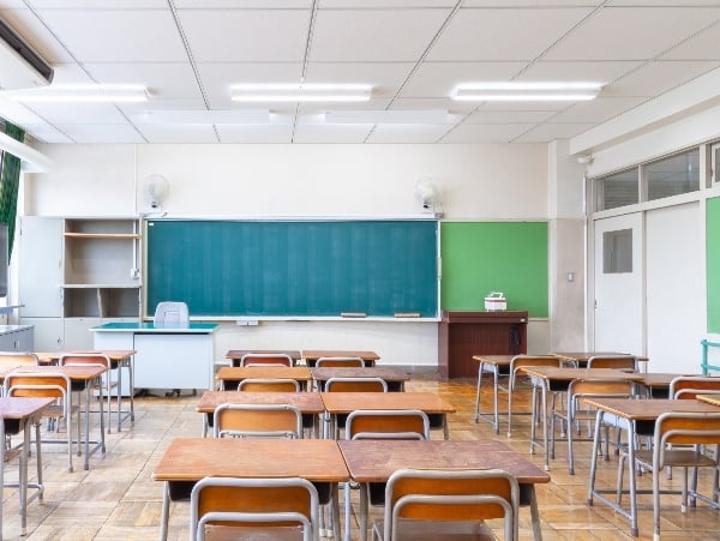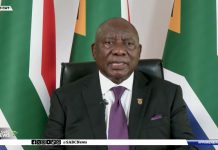Africa-Press – South-Africa. Despite the need for more teachers in South Africa’s public education system, recent budgetary decisions from Treasury will, over the medium term, continue to cut basic education funding per a pupil,
While classroom overcrowding is sometimes caused by insufficient physical infrastructure or furniture, the number and distribution of teachers are also determinants of whether class sizes are too high.
While there are guidelines about the maximum number of learners for different grades and subjects, many schools are forced to accommodate more learners in one classroom.
An overcrowded classroom is debilitating for learners and educators alike: where one educator is forced to teach upwards of 80 learners in one room, effective learning is impossible. Teachers describe being overwhelmed by marking and unable to pay individual attention to learners.
Pupil performance and educational attainment tend to lag behind that of learners who school in smaller, better-resourced classrooms. Despite the need for more teachers in South Africa’s public education system, recent budgetary decisions from Treasury will, over the medium term, continue to cut basic education funding per a pupil, as it has done for the past decade.
Already reflecting in large numbers of teacher vacancies and the freezing of posts for educators, these budget cuts will only further limit provinces’ ability to create enough posts for teachers to keep up with the rate at which educators are retiring and leaving the profession. Parliament received submissions about the Division of Revenue Amendment Bill last week, but did not seem to engage with the gravity of what these cuts will mean for learners and teachers.
Budgeting for teacher posts, or teacher salaries?
The 2022 Medium Term Budget Policy Statement (MTBPS) estimates that there are 31.4 learners for every teacher on average in the public education system. But other recent research suggests that this may be an underestimate of overcrowding, with some data indicating that classroom sizes are, on average, around 37 learners per teacher.
Certain subjects and languages see even fewer teachers available, with teachers either forced to teach larger groups of learners, more classes every day, or certain subjects not being offered at particular schools. Looking solely at a basic ratio of the numbers of learners to the numbers of educators, as Treasury does, masks vast inequality and inequity of distribution of educators within the basic education system: the concentration of educators in urban, better-resourced areas masks the severity of classroom overcrowding and shortfalls of teacher headcounts in less privileged areas.
Despite promising increased expenditure on “compensation of employees to fill teacher vacancies and reduce class sizes, supporting improved learning outcomes” in the public basic education system in this year’s MTBPS, Minister Godongwana has done nothing to reverse cuts to the provincial equitable share, which funds teacher salaries.
Compared to 2021/22, the provincial equitable share is cut by 3.9% in real terms in the current financial year, 2022/23. Funding for the provincial equitable share will decrease in both nominal and real terms in the outer years of the medium term. This will severely constrain provinces’ ability to hire more teachers and address classroom overcrowding.
Although promising to “increase headcounts, mainly in education”, without a political agreement with public sector unions on how to achieve this and the contradictory fiscal goal of reducing government expenditure, it is more likely that the value of teacher salaries will absorb any increases in expenditure on education personnel.
Educator compensation should stay the same. Attractive salaries are important to draw more young graduates to the teaching profession. But the narrative from the National Treasury – that more money is allocated to increase the headcounts of teachers – is, however, misleading. While a portion of a promised R41billion “unallocated reserve” has been committed towards education personnel spending, the MTBPS is unlikely to develop new posts for teachers because of substantial reductions to the provincial equitable share. This means that provinces will probably continue enforcing hiring freezes to manage their compensation budgets. A clear and reasonable political position must be agreed upon to balance proposed increases in public wage bill and the lagging headcounts.
Treasury is aware of the link between reductions in teacher posts and poor educational outcomes and classroom overcrowding. In February of 2021, Treasury recognised that restrictions it imposed on compensation for educators would “negatively affect learning outcomes” as class sizes got larger. In February 2022, Treasury urged provinces to reduce compensation budgets which it acknowledged could “result in fewer teachers and increased class sizes in some provinces.” With this precedent in mind, and the fact that the pool of money available for expanding the number of educator posts is being slashed, it is difficult to see Treasury’s promise to increase teacher headcounts to support better learning outcomes as anything more than doublespeak.
Counteracting teacher retirement rates
Not only has Treasury reduced the amount of expenditure on teacher posts through the provincial equitable share, but it has also failed to plan for the numbers of teachers leaving schools. Research predicts a worrying teacher retirement wave for the basic education sector.
Rates of teacher retirement and attrition will overwhelm the numbers of new teachers entering the system within 10 years. In order to replace teachers leaving the profession, the 22 public higher education institutions that offer some sort of education qualification will need almost to double the output of graduates entering schools as educators by 2030: in 2019, approximately 30,000 new teachers entered the system, but 59,034 new teachers will be needed annually by 2030.
But not all higher education institutions offer teacher-training programmes, and the closure of teacher-training colleges has placed additional pressure on the remaining institutions that do train teachers. Universities do not have the capacity to train the number of graduates who are needed. Treasury needs to capacitate higher education institutions to upscale their teacher training programmes and support the development of supplementary teacher training avenues like colleges or Technikons.
Opinions editor Vanessa Banton curates the best opinions and analysis of the week to give you a broader view on daily news happenings.
Funding for studying education is, however, not keeping pace with the demand for teachers. The Funza Lushaka bursary offered approximately 12,000 students bursaries this year. But this is fewer than the lower band of estimates of annual teacher retirement provided by the DBE in May 2022 (who estimate that the sector loses 18 000 – 22 000 teachers a year). This number of bursaries is also less than a quarter of what will be needed by the end of the decade. National Student Financial Aid Scheme (NSFAS) stopped funding postgraduate qualifications like the post-graduate certificate in education (PGCE) in 2021, further limiting the pool of funding available for graduates intending to study teaching.
Government does not offer a clear vision for how it intends to train and recruit new educators to meet the expected demand over the medium and long term. Although funding has been made available for over 500,000 short-term temporary ‘educator assistant’ positions for unemployed youth through the Basic Education Employment Initiative (BEEI) since 2020, the training provided to educator assistants aims to “gear the youth to take up other learning and earning opportunities after they exit” schools.
Upskilling the 255,000 education assistants who are currently employed in schools through the fourth phase of this now-celebrated programme to become professional teachers does not seem a priority. Professionalising educator assistants could supplement the numbers of new teachers entering schools from higher education institutions but will require dedicated support from Treasury.
Over the next few years, government will have to be active in supporting not only higher education institutions to expand capacity for teacher-training programmes and ensuring that bursaries are available to students who need them, but also then making sure that teaching posts (with attractive salaries) are developed and protected at the provincial level to absorb these newly trained teachers. Focus must also be devoted, at all these levels, to ensuring that teacher training meets geographical demand, as well as the need for educators for certain subjects, levels and languages. Despite Treasury’s promises of supporting public education, the proof will be in the pudding: and as it stands now, government’s spending plan is not going to do enough to reduce classroom overcrowding.
– Julia Chaskalson is a research and advocacy officer at SECTION27, based in Johannesburg.
*Want to respond to the columnist? Send your letter or article to [email protected] with your name and town or province. You are welcome to also send a profile picture. We encourage a diversity of voices and views in our readers’ submissions and reserve the right not to publish any and all submissions received.
For More News And Analysis About South-Africa Follow Africa-Press






